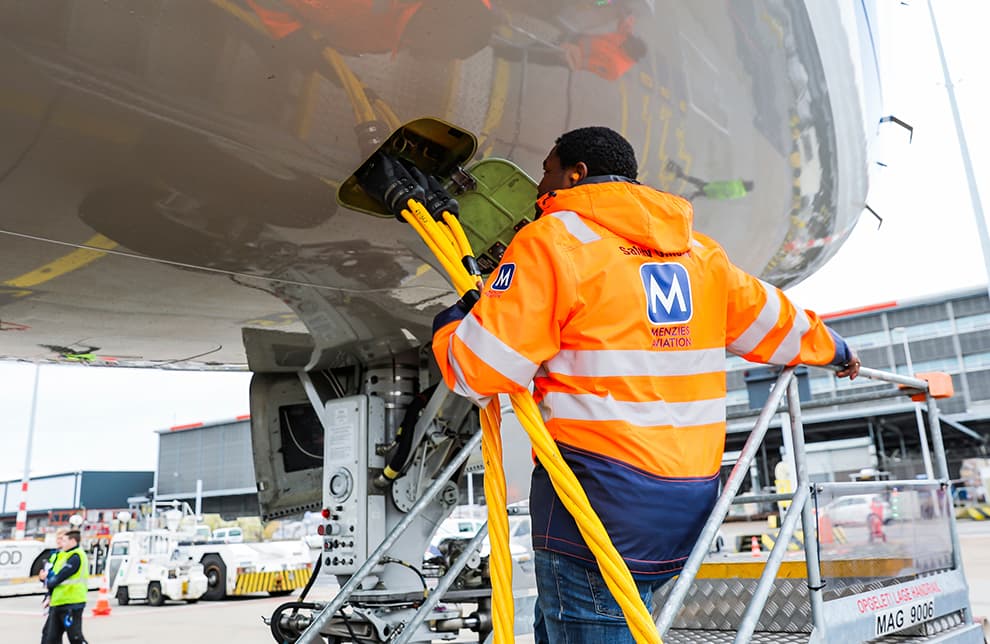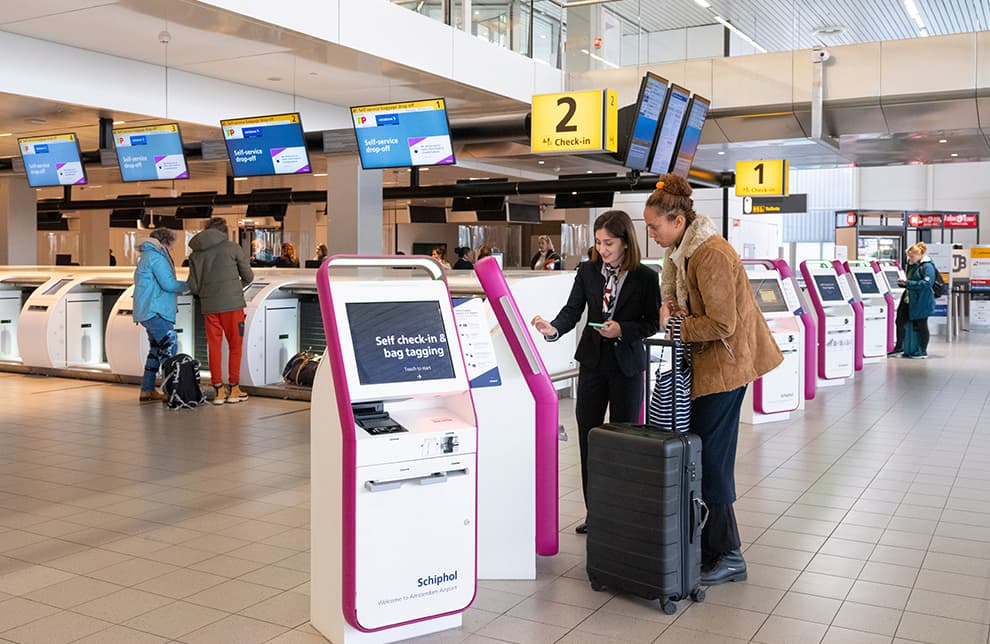Collaborative Decision Making (CDM)
To increase the predictability of our entire operation, we use the CDM process to share expected departure times. This stands for Collaborative Decision Making and sums up exactly what we do: making joint decisions based on the most accurate data. We deliver an Airport Operations Plan (AOP) daily and share it with the entire European aviation network as input for their Network Operations Plan (NOP) via the so-called AOP-NOP link. This gives this entire network and the airports that are part of it an increasingly clear picture of what is coming from Schiphol to other airports and vice versa. Together, we will ultimately achieve ever greater predictability and planability of all processes at Schiphol because we will know further in advance what is coming and when. This is how we break the circle of unpredictability together!

Cooperation needed
Aircraft handling involves many parties, including the airport, air traffic control, airlines and ground handlers. Each of these parties takes measures to set up its own process as efficiently as possible. However, in the sum of all these processes, this does not yet lead to the desired efficiency. Intensive cooperation is needed to make that happen.

Sharing information
Sharing operational information is crucial here. For example, if a plane leaves Cape Town two hours late, it will also arrive at Schiphol two hours later. This has consequences for all chain partners. The reserved gate only has to be available two hours later and the ground handler is also expected to arrive at the aircraft two hours later than planned.

Predictability increases
By jointly defining operational information such as expected landing times, taxi times, 'on block' (at the gate) and 'off block' (handling ready) times and sharing them as quickly and accurately as possible with all other parties, the predictability of the handling process increases. People and resources can be better deployed, even in anomalous situations such as delays or particular weather conditions. Ultimately, Eurocontrol also benefits because the time at which an aircraft can depart again can be predicted earlier and more accurately. This allows Eurocontrol to allocate scarce time slots more efficiently.

How does that work?
From the moment an aircraft's wheels touch the runway to the moment those same wheels leave the runway again, the handling process is meticulously monitored. That information is shared via the CDM Portal, which the airport, the airline, the ground handler and air traffic control have access to. Through established practices and process agreements, all parties can use this information and make important decisions together. That’s collaborative decision making.